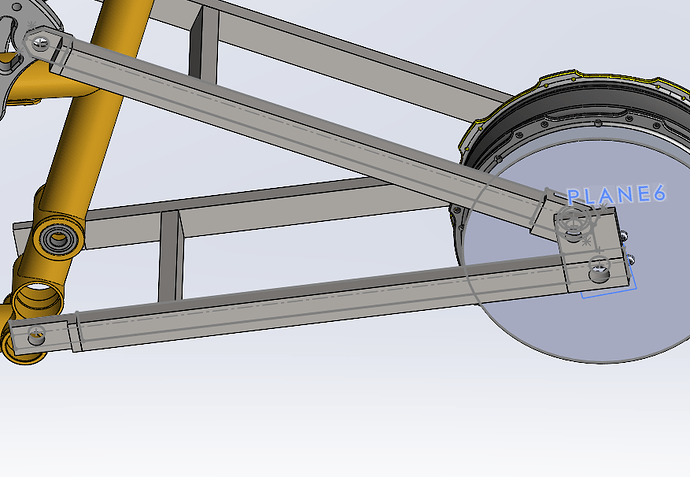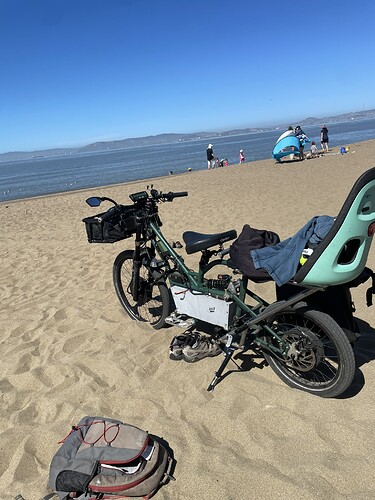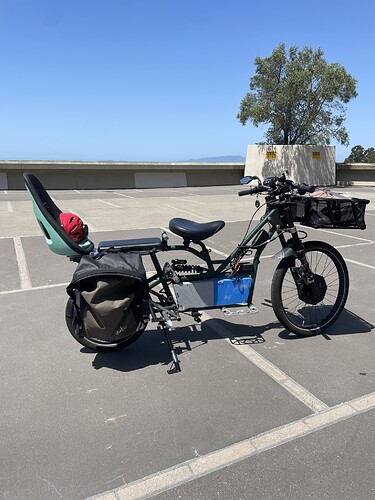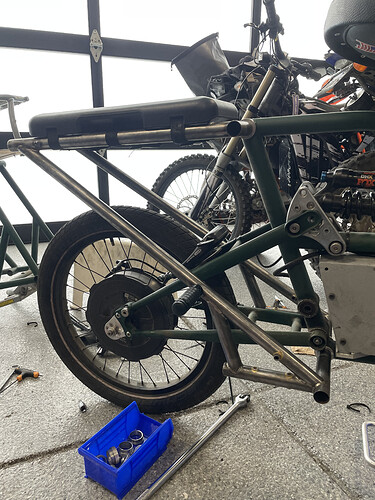Hello all!
Aspiring bike builder here and I’m currently working on fabricating a new rear swingarm for my custom electric full suspension cargo bike. The old swingarm snapped after 2 years and I’m trying to make sure that never happens again since that was SCARY af!
My question is regarding static FEA analysis. What maximum force should I design my swingarm to tolerate? Is there a way to estimate the upward force acting on the rear axle when I bottom out hitting a bump at 25mph? The bike weighs 60lbs and fully loaded with me + 2 kids would be around 340lbs.
Also given the force - what displacement / stress is tolerable? Are there any back of the hand rules like “never go more than half the yeild strength etc?”
Here’s my design so far. Its not pretty but its going to be easy for me to fabricate and iterate on:
This is a 4-bar suspension design using rectangular tubes since its easier for me to weld and machine parts for and since I’ve done this on a motorcycle frame successfully. These are 1"x0.5"x0.089" carbon steel tubes - so hoping thats strong enough. All the joints are machined 8mm or thicker carbon steel pieces. I’m only building the swingarm right now - the suspension rocker / frame was built earlier.
FEA was done by using fixed geometry for the pivots and applying a vertically upwards force on the axle hole. I just need to know if this thing will break on a bottom out, so my thinking is that at bottom out the spring is not involved and the whole thing becomes one rigid swingarm. Let me know if that assumption is incorrect.
Thank you! Am new to this so any input is appreciated!





